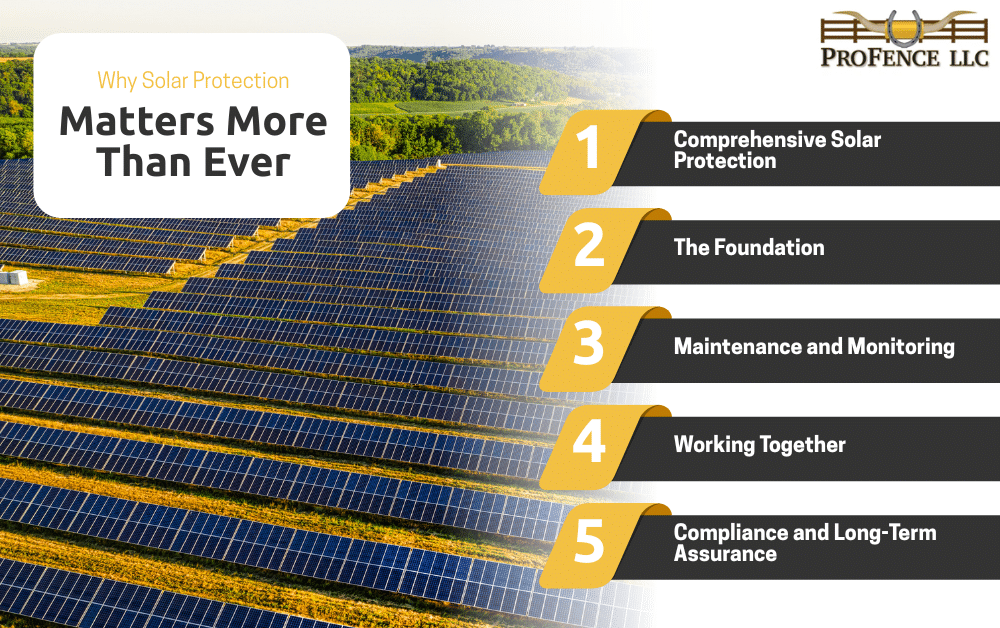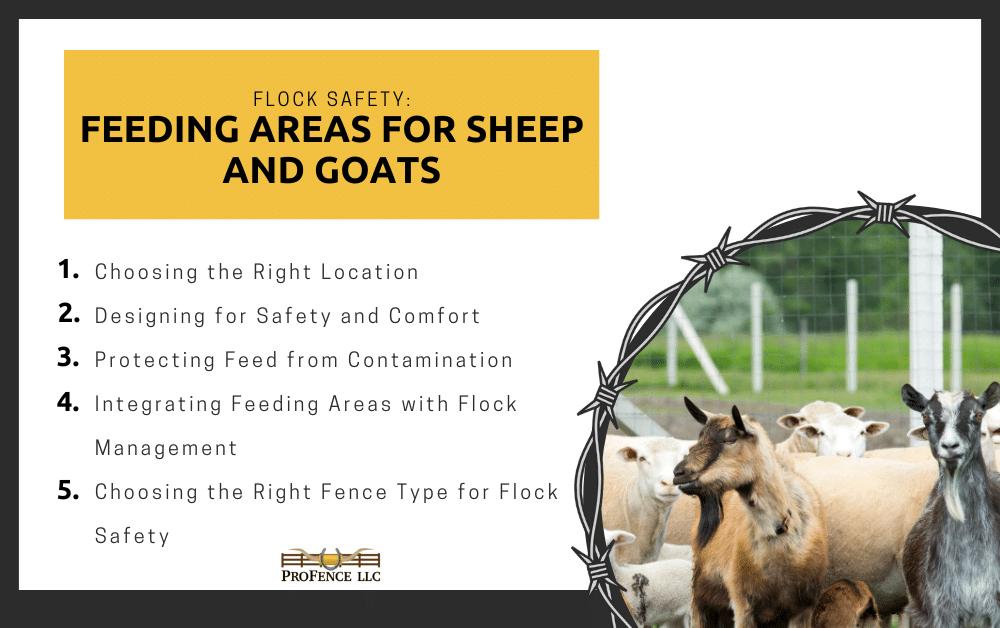Highland Cattle are quickly becoming a favorite for small farms, hobby homesteads, and sustainable agriculture operations across the United States. With their long, shaggy coats, impressive horns, and calm temperament, they are as functional as they are photogenic. These ancient cattle from the Scottish Highlands offer unique advantages—especially for landowners looking to raise low-maintenance, grass-fed beef or start a hardy breeding herd.
But Highland Cattle are still cattle—and that means infrastructure, planning, and secure fencing are essential before your first heifer or bull sets hoof on your land. If you’re considering adding Highland Cattle to your farm or homestead, this guide will help you understand what to expect, how to prepare, and why proper fencing plays a vital role in their care.
Whether you’re a first-time livestock owner or expanding your current herd, ProFence is here to help you plan, install, and maintain the ideal fencing system for Highland Cattle.
Why Highland Cattle Are in High Demand
Highland Cattle have gained attention across the agricultural world—not just for their Instagram-worthy appearance but for their practical benefits in a variety of climates and farm setups.
Advantages of Raising Highland Cattle
- Cold-Weather Hardiness: Their thick, double-layered coats allow them to thrive in freezing temperatures, eliminating the need for heated barns in winter climates.
- Efficient Grazers: Highland Cattle are excellent at converting rough forage into high-quality beef, making them ideal for pastures with native grasses.
- Calm Temperament: With proper handling, these animals are gentle, social, and responsive to humans.
- Premium Beef Quality: Highland beef is lean, flavorful, and in demand—especially within farm-to-table markets.
- Low-Maintenance Needs: Compared to traditional beef breeds, Highlands require fewer inputs in terms of grain and veterinary care.
Their rugged build and gentle disposition make them a popular choice for first-time cattle owners, but they are not without their challenges. Their horns, weight, and natural curiosity demand well-thought-out infrastructure—especially when it comes to fencing.
Is Highland Cattle Ownership Right for You?
Before you invest in Highland Cattle, it’s important to ensure your land, lifestyle, and goals align with their needs.
Grazing Land Requirements
While Highland Cattle are smaller than some traditional beef breeds, they still require ample space to graze. A general rule of thumb is 2–3 acres per head, though this depends on pasture quality, climate, and rotational grazing practices.
If you’re in a drier area or have less productive land, plan for more acreage per cow. Overgrazing can lead to pasture damage, reduced nutritional value, and the need to supplement with costly hay.
Climate Considerations
Highland Cattle are built for cold climates. While they can tolerate heat, they need shade, adequate water, and fly control during the warmer months. If you live in the Mid-Atlantic or Southern regions of the U.S., be prepared to monitor them closely for signs of heat stress.
Social and Behavioral Needs
Highland Cattle are herd animals and should not be kept alone. A solo cow will experience stress, reduced health, and increased likelihood of behavioral issues. Ideally, start with at least two cattle—three or more is even better.
In addition, their long horns and curious nature mean you’ll need plenty of space and strong containment solutions to protect both them and their surroundings.
If you’re unsure whether your property is suited for Highland Cattle, ProFence offers personalized consultations to help you plan a fencing and pasture system that works. Contact us today to speak with a livestock fencing specialist.
What Kind of Fence Do You Need for Highland Cattle?
When it comes to Highland Cattle, fencing is not a step you can overlook or cut corners on. These animals may be docile, but they are large, smart, and equipped with powerful horns that can destroy flimsy or poorly installed fencing.
Why Highland Cattle Require Specialized Fencing
- Bulls can weigh over 1,800 pounds, and even cows average around 1,100–1,300 pounds.
- Their horns can catch, lift, or damage fencing materials that aren’t properly secured.
- Their curiosity leads them to test boundaries, push against weak spots, and lean on posts—especially when food or attention is just on the other side.
In short, Highland Cattle need fencing designed for strength, durability, and long-term reliability.
Recommended Fence Types
| Fence Type | Description | Best Use |
|---|---|---|
| High-Tensile Wire Fence | Strong, low-maintenance, and ideal for perimeter fencing when properly braced. | Large pastures, hilly terrain |
| Woven Wire Fence | Tight grid spacing, great for calves and preventing predator intrusion. | High-security areas, mixed livestock |
| Electric Wire (as a supplement) | Creates a psychological barrier that discourages rubbing, pushing, or testing fences. | Outer perimeter or used with high-tensile systems |
Each fence type has its purpose. At ProFence, we work with landowners to assess the terrain, livestock behavior, and pasture rotation needs to create a fencing plan that suits your specific setup.
Technical Specs for Highland Cattle Fencing
- Height: 48″ to 54″ minimum
- Line Posts: 6 to 8 feet apart
- Corner Posts: Deeply set, reinforced with braces
- Gates: Heavy-duty steel gates with secure locking mechanisms
ProFence uses top-grade materials and professional installation methods to ensure that your Highland Cattle stay secure year-round. Whether you’re fencing 5 acres or 50, we have a system that will work for you.
Call us now to schedule a free estimate and learn more about our livestock fencing packages.
Shelter, Watering, and Feeding Basics
Highland Cattle are lower maintenance than most other breeds, but their basic needs still require attention.
Shelter Requirements
Highlands are comfortable in cold and snowy weather, but they do need protection from extreme wind, rain, and heat.
- Windbreaks, tree cover, or open sheds are often sufficient
- Shade is critical in hot climates to reduce heat stress
- Dry bedding and well-drained areas prevent hoof issues
If you’re installing fencing around barns or shelters, ProFence can ensure gate placement, traffic flow, and animal safety are part of the design.
Water Access
Highland Cattle need 10–20 gallons of fresh water per day depending on weather and feed. In winter, frozen water sources can be deadly, so we recommend:
- Frost-free hydrants
- Heated waterers
- Gravity-fed troughs in remote pastures
ProFence also installs water access corridors and cross-fencing systems that make rotating livestock around watering points easy and efficient.
Feeding
Highland Cattle thrive on:
- Grass and native forage
- Hay in winter or during drought
- Mineral supplements to ensure balance
They don’t typically require grain unless being finished for beef sales. That makes them ideal for regenerative agriculture and grass-fed beef markets.
Health, Handling, and Safety
Highland Cattle are healthy animals when given proper care, but they still need basic management.
Health Management
- Routine deworming, especially in wetter climates
- Fly control in summer
- Occasional hoof trimming in wet or rocky areas
- Annual vaccines depending on local recommendations
Handling and Horn Safety
- Halter training calves is highly recommended
- Use calm, consistent handling methods
- Never enter close quarters with untrained animals
- Horns can accidentally injure humans or other animals if space is limited
Good fencing reduces the need for constant human interaction and protects both the animals and the people working around them. ProFence can also help with permanent or semi-permanent working pens and sorting areas.
Raising Highland Cattle for Beef or Breeding
Whether you’re raising cattle for your own freezer or creating a full-scale beef operation, Highland Cattle are a solid investment.
Beef Production
- Maturity at 24–36 months
- High market demand for lean, grass-fed beef
- Smaller carcass, but higher quality per pound
Breeding Programs
- Easy calving and strong maternal instincts
- Low input cost compared to other breeds
- Strong resale value for registered stock
Marketing Highland Cattle
- Use social media to share your story and photos
- Sell directly to local restaurants or farmers markets
- Consider branding your own beef label
Before expanding, make sure your infrastructure is scalable. ProFence can help you plan a fencing layout that grows with your herd without major rework or relocation costs.
Why Choose ProFence for Your Highland Cattle Fence Installation
At ProFence, we don’t just install fences—we help farmers and landowners build systems that last. We work across a wide region of the Eastern U.S., including:
- Pennsylvania
- Maryland
- Virginia
- West Virginia
- Delaware
- New Jersey
- North Carolina
Our Services Include:
- Custom livestock fencing
- Cross-fencing and pasture rotation design
- Installation of woven wire, high-tensile, electric, and board fences
- Working pens and livestock gates
- Deer and predator prevention systems
From small hobby farms to commercial livestock operations, ProFence is trusted by hundreds of landowners to build secure, long-lasting fencing solutions.
Contact us today to schedule a free on-site consultation.
Ready to Start with Highland Cattle? Begin with the Fence
Highland Cattle offer tremendous benefits for landowners looking for a low-maintenance, productive, and enjoyable livestock experience. But as with any large animal, the right preparation is key. The first step is ensuring your fencing is strong, reliable, and built with your land and livestock in mind.
Let ProFence help you build a fencing solution that keeps your Highland Cattle safe and secure for years to come.
Call ProFence or Request a Consultation. Protect your land. Protect your animals. Start strong—with ProFence.







